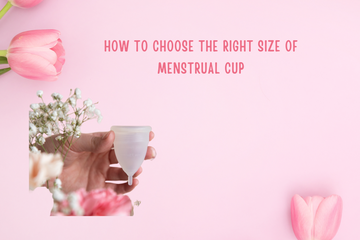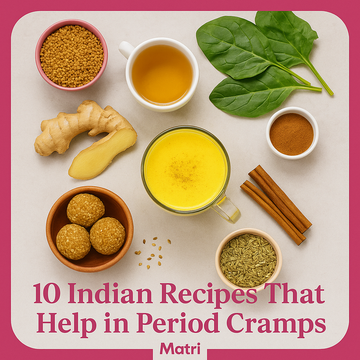Choosing the correct menstrual cup size is one of the most important steps to ensure comfort, effectiveness, and leak-free protection during your period. Since every body is different, finding the perfect fit requires understanding your anatomy, flow level, and a few personal factors. In this menstrual cup size guide, we’ll break down everything you need to know to make the best decision for your body and lifestyle.
Why Choosing the Right Size Matters
A properly sized menstrual cup stays in place, prevents leaks, and offers up to 12 hours of comfortable protection. If the cup is too large, it may feel uncomfortable or cause pressure. If it’s too small, it may not form a proper seal and can lead to leaks. A poor fit also makes insertion and removal harder. That’s why understanding how to choose menstrual cup size is essential.
Factors to Consider When Choosing Menstrual Cup Size
There is no universal size for menstrual cups. Brands usually offer two to three sizes and recommend one based on several factors. Key things to consider include age, childbirth history, cervix height, flow intensity, and pelvic floor strength. For instance, if you’ve given birth vaginally, you may need a larger size due to changes in vaginal muscles. If you are young or haven’t had children, a smaller cup may be more suitable. High or low cervix positioning also affects which length of cup will feel comfortable.
Age and Physical Development
Age often plays a role in determining menstrual cup size. Younger users, especially teens, typically need smaller, narrower cups that are easier to insert and more comfortable. If you’re older, especially over 30, or have given birth, your body may need a slightly larger size to ensure the cup sits properly. This doesn't apply to everyone, but it’s a helpful starting point.
Cervix Height and Cup Length
Your cervix height directly impacts how a cup fits. To measure your cervix, insert a clean finger into your vagina and feel for a firm, round surface. If it’s close to the vaginal opening, you likely have a low cervix and need a shorter cup. If it’s deeper in, a longer cup will work better. Matching cup length with cervix height ensures comfort and a better seal.
Menstrual Flow Intensity
If you have a heavy flow, you’ll need a cup with a higher capacity. Some small cups can hold as little as 15ml, while larger ones can hold up to 30ml or more. Choosing the best menstrual cup for heavy flow ensures you don’t have to empty the cup frequently throughout the day. A cup with a larger body and better suction seal works best in these situations.
Small vs Large Menstrual Cup
Understanding the difference between small vs large menstrual cup sizes can help make your choice clearer. Small cups are usually recommended for light flow, first-time users, teens, or those with strong pelvic floor muscles. Large cups are better for those with heavy flow, who've had a vaginal birth, or who are over 30. However, comfort and fit should be your ultimate guide, not just age or flow.
Pelvic Floor Strength
Pelvic muscles play a big role in holding the cup in place. If you have strong pelvic floor muscles, often from regular exercise or no history of childbirth, a smaller or firmer cup will stay in place better. Weaker pelvic muscles may require a softer or wider cup to prevent it from slipping or leaking. Doing Kegel exercises can improve pelvic strength and help with overall menstrual cup use.
Material and Flexibility
While not directly related to size, the cup’s firmness affects how it feels and functions. A firmer cup opens more easily inside the vagina, but may press on the bladder. Softer cups are gentler and better for those with sensitivity but may take longer to open correctly. The material’s flexibility often complements the size and affects comfort, so consider both when making your choice.
Trying Different Sizes for Best Fit
Sometimes, you might need to try a couple of sizes or brands before finding the one that feels perfect. Some people even keep two sizes—one for lighter days and one for heavier flow. Trial and error can be part of the process, but using a size guide and understanding your anatomy makes it easier to narrow down the right option quickly.
If you're new to menstrual cups and want a simple, stress-free introduction to how they work, check out our step-by-step guide for first-timers. It walks you through everything from folding techniques to insertion and removal tips—perfect for beginners who want to feel confident and prepared.
Brand Variations in Sizing
Not all brands follow the same size chart. A "small" in one brand might feel like a "medium" in another. Always refer to the specific size guide provided by the brand you’re considering. Most brands include measurements in diameter, length, and capacity so you can compare them easily.
Conclusion: Making the Right Choice
Finding the right menstrual cup size involves a bit of personal research and self-awareness. Use this menstrual cup size guide as your starting point, and don’t hesitate to consult product reviews, brand size charts, and your own comfort level. The best menstrual cup for heavy flow, active lifestyle, or sensitive anatomy is out there—you just have to find your match. Once you do, you'll enjoy a sustainable, comfortable, and eco-friendly period experience every month.
FAQs
1. Can I use a large menstrual cup if I haven’t given birth?
Yes. You can use a large menstrual cup even if you haven’t given birth, especially if you have a heavy flow or a high cervix. What matters most is how well it fits and how comfortable you feel while wearing it.
2. How do I know if my menstrual cup is too big?
If your menstrual cup feels uncomfortable, causes pressure, or keeps slipping down, it might be too big. Difficulty inserting or removing it, or constant leakage despite correct positioning, are also signs that your cup size might be too large for your anatomy.
3. Is it safe to switch between small and large cups during one cycle?
Yes. Many users switch between small and large cups depending on their flow. Using a smaller one for lighter days and a larger one for heavy days is safe and can offer more comfort and protection throughout the cycle.
4. Can a menstrual cup get stuck if it's the wrong size?
No. A menstrual cup cannot get stuck in the body. However, if the size is too large or too small, removal might be slightly more challenging. Relaxing your muscles and using the correct technique will help remove it safely.
5. How often should I change my menstrual cup size?
There’s no set rule for changing your cup size, but if your body changes due to childbirth, aging, or pelvic surgery, you might need a different size. Pay attention to comfort and leakage to decide if a change is needed.
6. Are small menstrual cups better for teenagers?
Yes. Small menstrual cups are generally designed for teenagers or first-time users. They’re narrower and more flexible, making them easier to insert and more comfortable for smaller vaginal canals or those new to menstrual cups.
7. What if I’m between sizes?
If you're between sizes, consider your flow and cervix height. Go for a slightly larger cup if you have a heavy flow or higher cervix. Choose a smaller one if you prioritize comfort and have a light to medium flow. Some brands also offer medium sizes.
8. Can cup shape affect sizing and comfort?
Yes. Different cup shapes (bell-shaped, V-shaped) can affect comfort and fit, especially for people with low or high cervixes. A bell shape may suit those with a low cervix, while V-shapes often work better for high cervix users.
9. Is it okay to cut the stem if it feels uncomfortable?
Yes. If the stem of your menstrual cup sticks out or feels uncomfortable, it can be trimmed. Make sure you cut only a small portion and test it. Some people remove it entirely, but be cautious to leave enough grip for safe removal.
10. Can a menstrual cup leak if the size is wrong?
Yes. A poor-fitting cup may not seal properly and can cause leaks. If the cup is too small, it may move around. If it’s too big, it might not open fully. Choosing the right size helps prevent leaks and ensures a secure fit.






